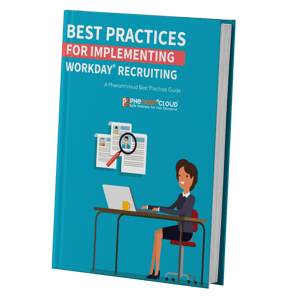
If you follow our musings here at PhenomᵉCloud Insights, you know our business is not about helping companies improve employee engagement. No client ever asked us to fix it. What they do ask for is solutions to business problems, and when they solve the problems the relevant employee metrics improve. When we remove barriers, people respond.
The Employee Engagement Hoax
Liz Ryan caused a stir two years ago when she named employee engagement measurement a hoax.[1] She called out companies who conducted annual surveys so leaders and HR could say they “have their ear to the ground.” She cited the annual survey as a sure sign they are not listening. In a healthy culture where open communication and trust is the rule, leaders don’t need a survey. They know employees are engaged because they are engaged with them. In an unhealthy culture, a survey won’t fix anything and can actually do harm.
New Methods in Employee Measurement
In the intervening two years, a new industry grew up around regular or “pulse” surveys that give companies a continuous read on employee perceptions. The idea is to communicate that leaders are constantly listening and to get a more accurate and timely measure than a single snapshot. It is an improvement but will be effective only if business leaders and HR take timely and relevant action.
We are witnessing other changes in employee measurement.
- Monitoring tools for social media and other communication channels to learn what employees are thinking. This can work well if business leaders are engaged in the online conversation.
- Employee badges with microphones for voice analysis and sensors to monitor movement. We expect to see pushback except perhaps in occupations where constant monitoring has become the norm. It may make sense to require monitoring tools in high-risk situations in sectors like finance or nuclear power operations, but it may take some creative convincing in lower-risk areas.
- Wearables provide information on stress and other health indicators. If companies can find a way to overcome privacy concerns, these might be useful in wellness programs.
The challenge is that none of these tools replaces the interactions between employee and manager that form the foundation of a healthy working relationship. Ryan offers 12 ways to improve communications; sound advice is well worth a re-reading, but open communication is only a starting point.
A Balanced Approach to Employee Engagement
What the employee/employer relationship needs is a balanced approach. The idea behind most engagement efforts is to create willingness in employees to put their company’s interests first. That one-way approach cannot work over the long term. People don’t commit to your mission to further your business interests. They do it because it will make their lives better.[2]
Much more important than measuring engagement is doing the things that create a mutually beneficial relationship. If you want more from employees, you first must give more. You can’t recruit your way to engagement. It is something you must build through mutual trust and open communication. Ryan’s suggestions are a starting point, but any effort must have a clear benefit to the employee. We can suggest three ways to start.
- Support and encourage self-directed learning. On average, employees spend 3.3 hours per week learning on their own and 37 minutes in employer-provided training. Seventy-five percent pay an average of $339 per year of their own money on learning.[3] If you are not supporting your employees’ learning, what can you expect from them?
- Reward and recognize performance. If discretionary effort improves profitability, measure the contribution and share the gains.
- Treat employees as though you want them to stay, but don’t make empty promises. Help employees to attain their goals, even if those goals take them outside your company. If they do leave for a better opportunity, they will be ambassadors for your employer brand.
A Final Thought
Measuring employee engagement may be important to you, but it will be important to your people only if you are as engaged as they are.
References:
1. Ryan, Liz. "The Employee Engagement Hoax." Forbes. July 6, 2014.
2. Freifield, Lorri. "Unlocking Tribal Knowledge to Transform Your Organization." Training Magazine. December 12, 2013. Accessed November 10, 2016.
3. "Why Learning is the Key to Happiness at Work." Degreed. November, 2016.
Best Practices For Implementing Workday® Recruiting
Workday® Recruiting is the solution that gives you the collaboration, sourcing, and analytics you need for today's competitive talent market.
Give yourself a competitive edge.. Learn how to make the most of it with our free e-book
Get the guide here.
BEST PRACTICES FOR IMPLEMENTING WORKDAY RECRUITING

PhenomᵉCloud is a comprehensive technology solutions provider committed to empowering businesses to overcome challenges, enhance their workforce capabilities, and achieve superior outcomes.

Leave a Comment